On Being a Stem Cell Donor (Part 1)
- cancer, stem cells, and this little sister finally getting in the game -
This is the first in a series on my experience as a stem cell donor. As I’ve talked with others about the stem cell donation process, I’ve realized most of us are woefully uneducated! There are far too many people waiting for a donor because there's no known match--especially in non-white ethnicities.
The goal of the series is simple: increase awareness, reduce fear and misconceptions about being a donor, and help save lives.
Do any of you have an older brother or sister? Were you close when you were kids? Or did you two make faces at each other or sneak in smacks on the head when your mom wasn’t looking? Just me? Didn’t think so.
The Backstory
Setting: Early 80s in Small Town America.
If the weather was decent and the sun was up, we were banished from the house while our mom smoked Salem Lights 100s while talking on a wall-mounted phone with a cord long enough to reach to any room of the house. Besides readmission for lunch—the best tuna sandwich you ever had + a cup of sugar-loaded Kool-Aid—we spent all day riding the neighborhood on our bikes, digging in a dirt pile outside, or perusing the T-W-L (aka “the dime store,” which would have a completely different meaning these days") on Main Street two blocks away. But never Bill’s (aka “the dollar store”) because it was across Main Street, and that was one of the two rules in your summer of unending freedom:
Do not cross Main Street.
Come home when the street lights begin to hum.
I was the middle of three kids (save your evaluations, psychologists) and the only girl, which meant that in addition to Barbies and Cabbage Patch Kids, I also played with Hot Wheels, GI Joe action figures, and cap guns. What I wanted most, with everything in my soul, was to play baseball with my older brother and his friends in the front yard, where the azalea bush was first base, the Japanese magnolia was second, a stick in the far corner of the yard was third, and the front stoop was home. And if you are a ten-year-old boy, there are zero cool things about playing with your eight-year-old sister while your friends are present.
I just wanted a chance to get in the game and hit one ball—I knew I could!—so hard that my brother’s friends would all look at me in amazement. I wanted them to talk about how awesome Van’s little sister was, then he would be proud to be my big brother and would point me out in the hallway of our small K-12 school and say, “That’s my sister.”
Wishful thinking.
The older we got, the larger the gap became as he stayed at our grandparents’ home a good portion of the summers to help our grandfather with his livestock and garden while I hung out with friends, went to malls, or got lost in a book.
And then he moved out. I was nearly finished with my sophomore year when Van turned 18 and flew the coop. He and our parents weren’t seeing eye to eye on more than a few points, so he moved in with a friend. I rarely saw him after that, and two years later I went away to college.
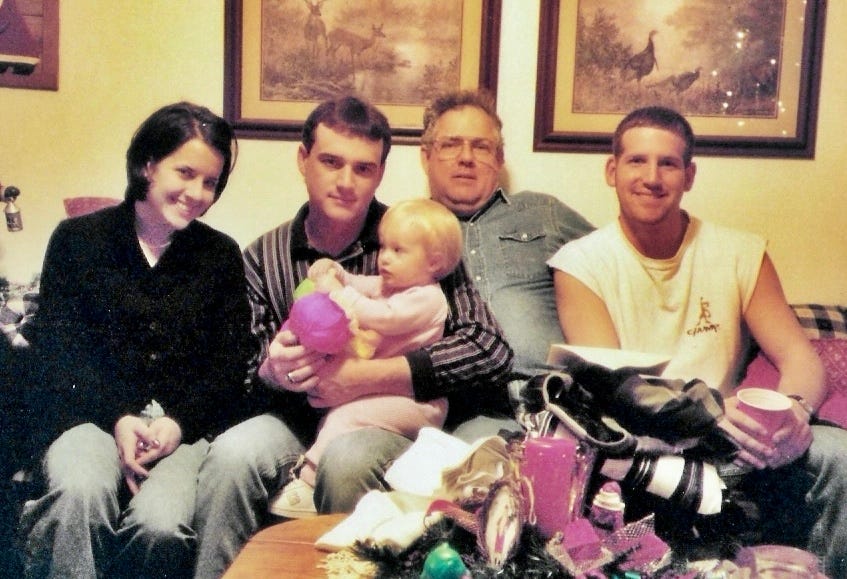
Not that we were very close, but we grew further apart as there were no cell phones or Internet-connected devices in our lives by which to send funny memes across the miles or eye-rolling emojis during holiday gatherings. But then we started really adulting, and there was a universality in getting grown-up jobs, having kids, and facing relationship woes that slowly began to bring us back to some common ground.
The playing field felt even for the first time. We could finally see each other as peers and respect each other for the people we had become. We could have meaningful, heart-felt conversations and call each other to discuss life as middle-aged adults raising young adult children.
The Diagnosis
In April 2021, Van called me. “Are you sitting down?”
He had been exhausted and short of breath, which was unusual for him, so his doctor ordered some labs. Before he even finished the 10-minute drive home, they called him. His white blood cell count was through the roof, and he needed to pack a bag and get back to the clinic. They had already spoken to someone at UAMS Medical Center in Little Rock, Arkansas, and they would be expecting him.
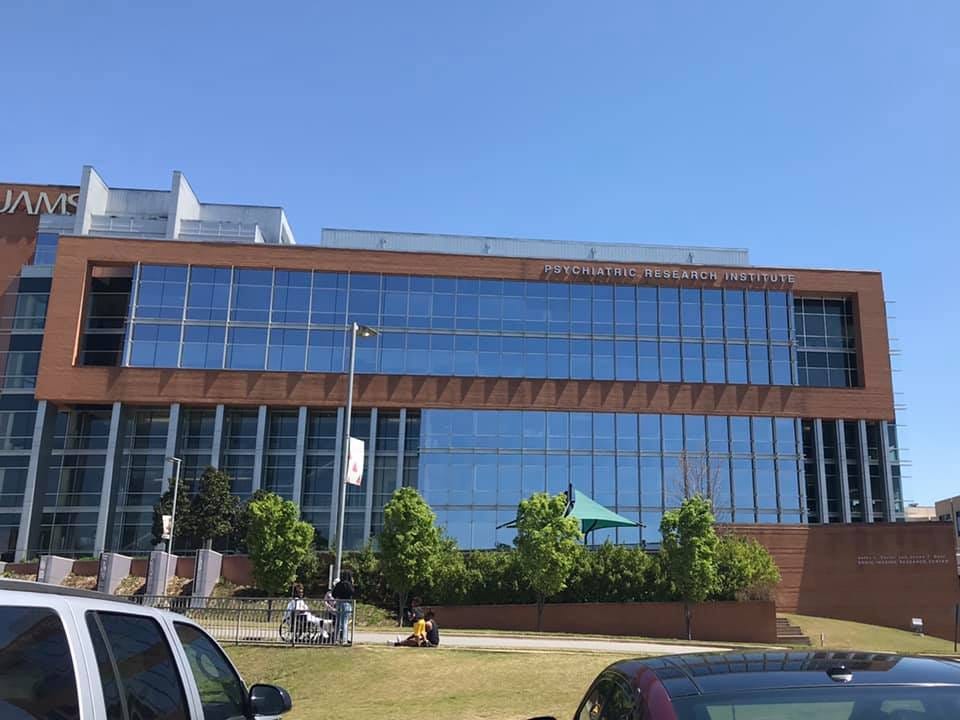
He was diagnosed with Acute Myeloid Leukemia (AML) and spent the next six months in and out of UAMS getting treatments. That sentence makes it sound very simple, short. It was anything but.
Through it all, Van mostly kept a positive attitude, and we were sure he would beat this cancer. We became closer than we ever had been in our lives. When you are in a hospital room with nothing but time on your hands, you tend to text and call your sister a little more. The same is true when you have a brother who has cancer.
After five months in remission, Van’s leukemia returned. He was admitted to UAMS again on March 1, 2022.
Initial Testing
On April 21, a transplant coordinator called and asked if I would be willing to be tested as a potential donor for a stem cell transplant for Van. Of course I said yes! She asked me a series of screening questions so the doctor could review my medical history and any health issues I might have. It’s my understanding that certain current or past conditions can eliminate you immediately.
I was greenlighted so she asked if she could overnight a testing kit to me. I had the choice of a swab kit or a blood kit, but she said a blood sample would potentially be quicker to analyze. Van’s daughter and our younger brother would also be tested.
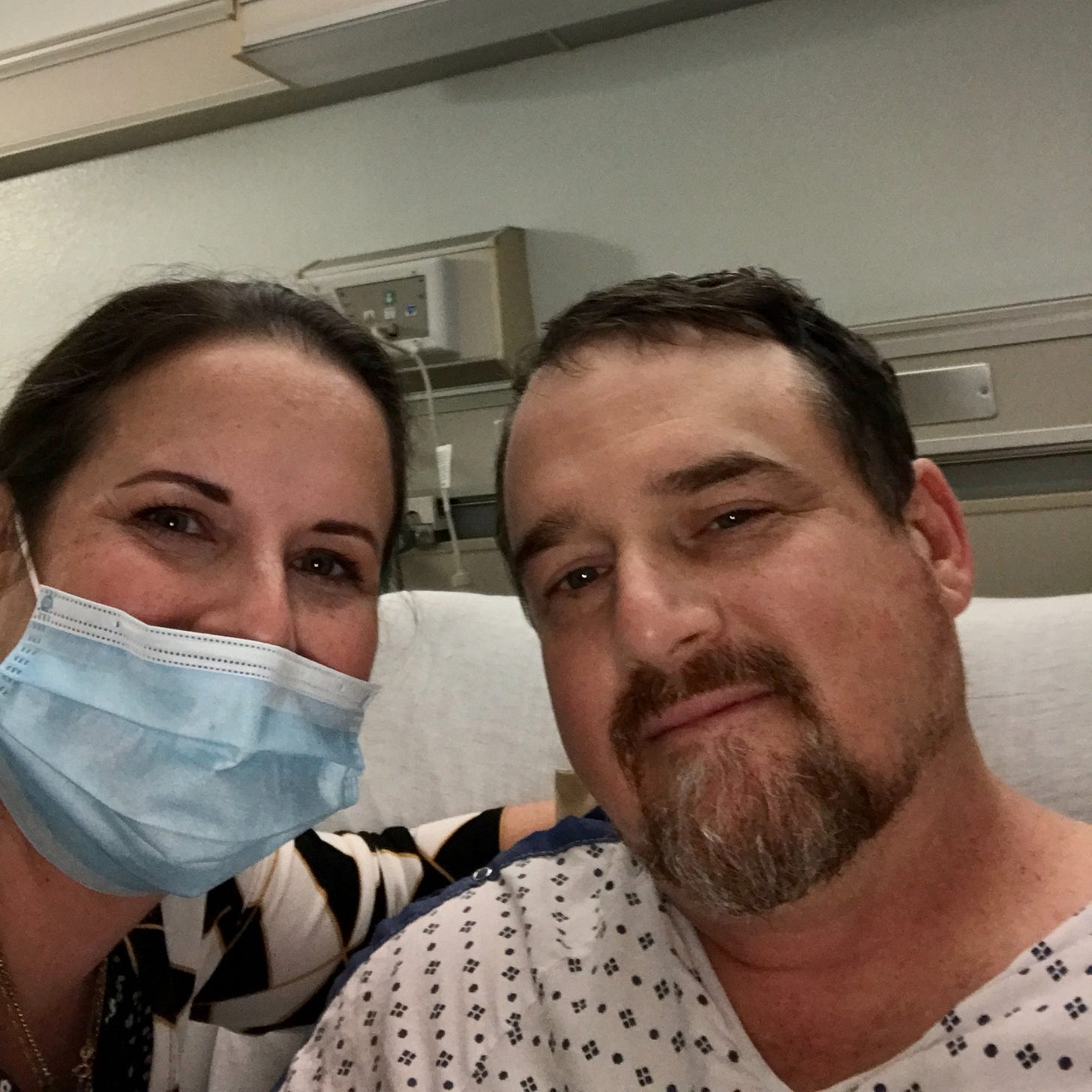
I received the kit the next day and went to our local hospital to have the blood drawn. My cousin, who works as a physical therapist at the hospital got in touch with the lab director, who said they would provide the service as a courtesy visit.
The lab personnel expertly filled several vials with my blood, affixed all the labels, packaged things according to the instructions, and walked it down to their FedEx Express pickup point. I’m not sure if every hospital would be this generous, but I’m chalking it up to connections and small-town life!
Note: Several people have told me they could never be a donor because they don’t like needles, so I want to be as transparent as possible about any discomfort I’ve had in the donor process. I opted for the blood test here, but a potential donor could just do the cheek swab instead.
Identified as a Match
Less than two weeks later, I accompanied Van to his routine appointments at the UAMS Cancer Institute. We were waiting to see his doctor when I received an email.
“…You have been identified as a potential life-saving match for a 49-year-old man in need of a blood stem cell transplant…”
16 years prior while working at a university, I first learned of Be The Match, an organization that matches potential donors to patients in need of stem cell or bone marrow transplants.1 Representatives had an information table on campus, and I chose to register. I swabbed the inside of my cheek and agreed to have my info stored to be called in the future if they discovered I was a match for a patient.
For 16 years I had only received routine emails from Be The Match asking me to verify my contact info if I want to remain in their database. Until May 2, 2022.
UAMS was still completing their primary testing on my blood, but Be The Match already knew I was an initial match based on some HLA markers. They just didn’t know the patient was my brother!
One month later, on June 1, Van’s transplant coordinator Amanda contacted me. UAMS had completed their testing.
“You’re a perfect match, and Dr. Veeraputhiran wants to use your stem cells for his transplant.”2
I immediately called Van.
Guess who was ready to let his little sister in the game…
Please check out Part 2!
I hope you’ll continue to read about this journey. Be sure to subscribe to get the next post right in your inbox.
If you would like to join the Be The Match registry, visit the website and choose the Join button at the top. All the steps are outlined there, and a swab kit will be sent to you.
When I first wrote about getting that call in my post Everyday Tasks, I wrote that I was “nearly a perfect match.” I have since learned, however, that I am considered a perfect/full match as 12/12 of my markers match Van’s. To learn more about HLA markers and matching and the mind-blowing science of it all, check out the basics or take a deeper dive.

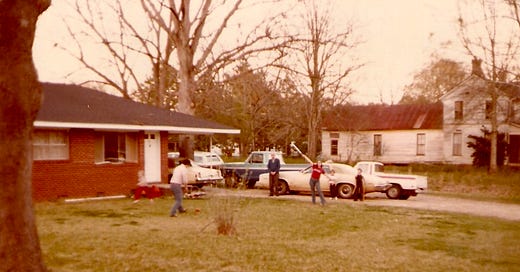



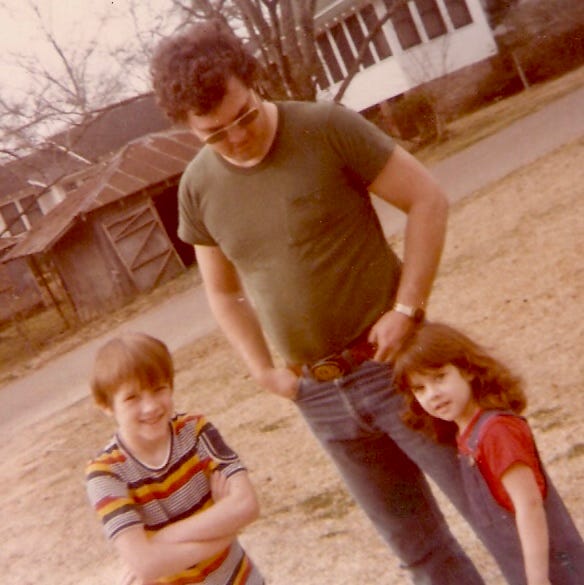
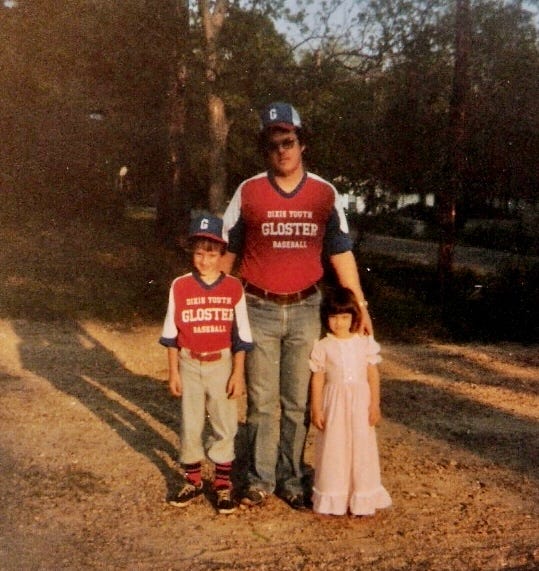
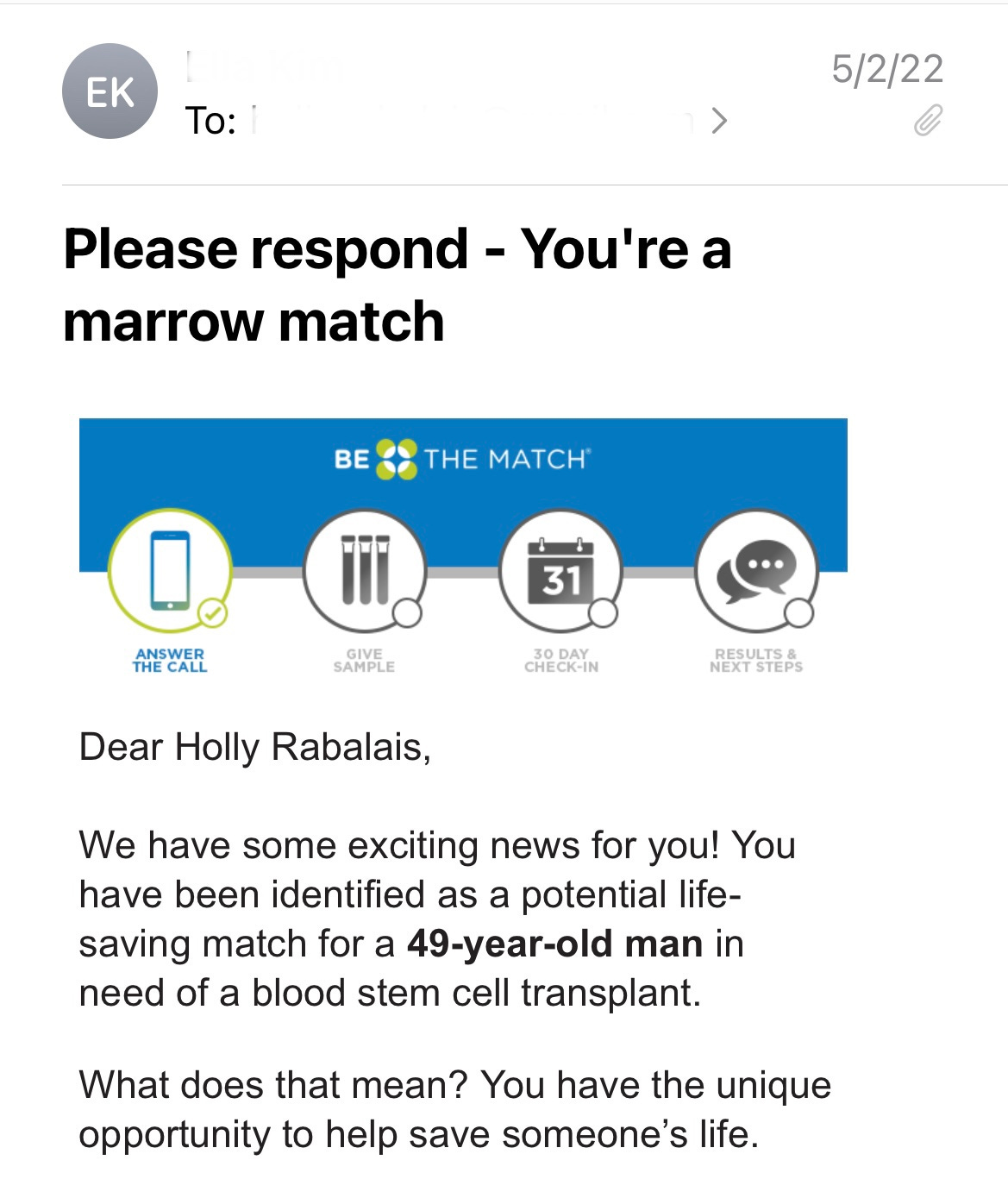

I've recommended your column specifically because of this series on being a stem cell donor. There are a lot of folks trying to explain the technical side of things to lay audiences. As a bio-scientist myself, I think the non-technical, experiential side of dealing with extreme disease is at least as important.
This (both part 1 and part 2) is a beautifully written and inspiring story. I especially enjoyed listening to this post in your own voice.